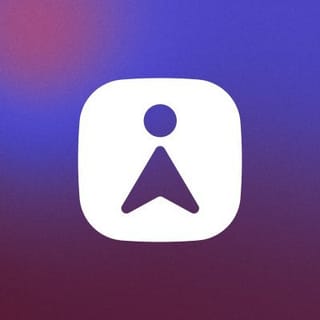
Sales prospecting through cold emails can take a lot of trial and error to get right. Similar to cold calling, cold emailing takes a lot of persistence mixed with respect and a high level of professionalism.
Sales professionals spend around 13 hours a week on emails. Looking to move faster? Template your emails.
Templating your messages helps you ensure that your emails are high-quality and relevant without requiring too much of your time. Templates allow a sales team to send outreach emails that stay on brand and save time composing.
A well-written template gets the basics out of the way, creating space for your sales team to focus on more important details like open rates, response rates, and conversions.
What makes a good sales prospecting email template?
The great thing about working on a sales prospecting email template is that you only have to do it once.
No more writing an email from scratch each time you want to perform outreach. Instead, you focus on swapping out the variables with the right information or use a CRM or sales engagement platform and its automation capabilities to fill in the blanks for you to save even more time.
A good sales prospecting email template focuses on all of the important aspects of an email. Every portion of your email plays an important part in getting your email opened, read, and replied to. The key to prospecting is to keep everything clear and concise and respect your prospect's time.
The structure
We'll be looking at the basic structure of an email and the importance of each element. In a top-down view, we'll show the flow of an email from what the reader first sees until the end.
Subject line
Before your recipient even opens your email, they'll be looking at the email subject line — in fact, 64% of subscribers open their email based on the subject line.
Your subject line should give the recipient some insight into what your email contains. It may be your only opportunity to pique their interest, so make sure you're being specific and telling them exactly what they're getting when they open it.
Personalize the subject line by including their name or other personal information and create a sense of urgency to open the email.
Introduction
Keep your opening line and introduction brief by letting the recipient know who you are and who you work for. You'll want to keep things formal, but still simple. Make sure your message is straight to the point and easy to read.
Body
The body of your email should be clear and concise. Get straight to the point and let them know what you're offering and how that can benefit them. Give an example of a solution you provide that could change the way they do business.
Add some customization, providing case studies or a metric showing how companies like theirs have seen higher ROI.
CTA
Provide a call to action (CTA) that lets the recipient know exactly what action you'd like them to take and how they can do it. This can be a calendar link, a request for a quick call, or a link or button to follow. A personalized CTA can lead to a 202% increase in engagement.
Sign-off and signature
As always, be polite and professional with a sign-off. Include your name, job title, company, and contact information. Relevant links, like your LinkedIn, show the recipient social proof through your company's social media profiles.
Sequences
Setting up your templates in a sequence can give you a customized email outreach system. Your salespeople can create a sales funnel made up of different emails designed to engage a prospect. The sales process will begin to become streamlined with a system of initial outreach and follow-up email options.
4 sales prospecting email templates
Your sales prospecting emails should focus on personalization. The goal is to get higher reply rates and measure each stat, such as healthy open rates and clickthrough rates. These cold email templates get your prospects' attention and give them a reason to engage with you about your product/service.
Let's take a look at a couple of templates that can help get your sales reps a head start:
1. Introduction email
The purpose of an introduction email is to let your prospect know who you are and the company you represent. Potential customers may not be familiar with your brand, your product, or your service.
Example:
Subject line: Are you looking to increase [goal]?
Hey [prospect name],
I was looking into [prospect's company] and thought [your company name] would be a perfect fit for getting your [goal] met. [Your company name] specializes in helping businesses like yours see improved results by:
- [Goal 1]
- [Goal 2]
- [Goal 3]
Are you available to discuss how [prospect's company] can see increased success?
Feel free to pick a time from my calendar for a quick 15-minute call. [CTA link]
Best regards,
[Your name]
[Your business contact info]
2. Request for decision maker
One of the most difficult parts of B2B sales is getting to put your sales pitch to the right person. If you didn't receive a direct referral to someone and your cold email is going to the wrong inbox, you need to find the right person.
One of the most effective ways is to simply ask.
Example:
Subject line: Who should I speak to?
Hello,
I have a small request – can you direct me to who handles decisions for [department or company]?
Thank you.
Best regards,
[Your name]
[Your business contact info]
3. Benefit email
Give the recipient a reason to contact you by providing them with the benefits of your company, service, or product. By contrasting their pain points with the benefits, you can get a higher yield on responses.
Example:
Hey [prospect name],
I understand you're constantly dealing with [pain points]. I wanted to let you know that [your company name] is [One to two-sentence pitch about your product, company, or service].
Our clients have seen a [benefit] with [goal] time and time again. Would you be interested in exploring the ways [your product or service] could benefit [prospect's company]?
Best regards,
[Your name]
[Your business contact info]
4. Resource email
Providing value to your prospect can help gain trust and build rapport between you and the potential customer. A prospect who is given a resource that shows the benefits of your product or service can verify the benefits. The resource you provide them could be a case study, article, or independently verifiable testimonials from happy customers.
Example:
Hey [prospect name],
Did you know that [prospect's industry] has [brief mention of the point of the article or case study]?
Here's the link to check it out: [link]
Happy to discuss how [prospect's company] can see increased success like the ones mentioned in the article.
Best regards,
[Your name]
[Your business contact info]
Smarter emails
Many sales teams spend more time emailing than they do selling, which means their company's potential for growth is diminished — that's why Superhuman is dedicated to freeing up time for sales teams.
Superhuman brings you blazingly fast email for high-performing sales teams, and we're the only inbox designed to save reps hours every week, with sales intelligence and deal collaboration built in. Get started today, and close more deals with a 13-month year.




